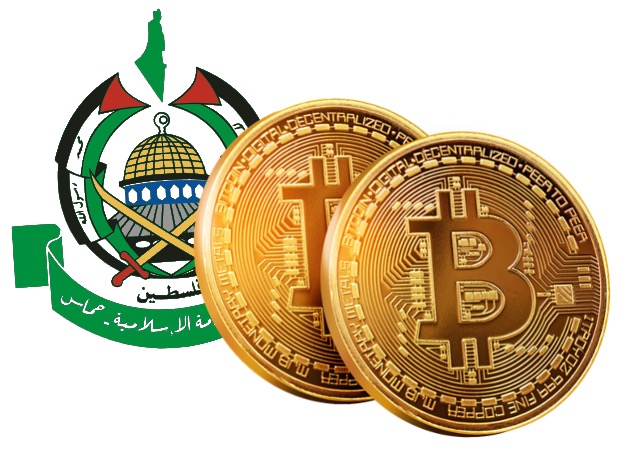The Palestinian militant group Hamas has seen a surge in cryptocurrency donations since the start of the armed conflict with Israel last month, a senior official with the group said, exploiting a trend in online fundraising that has enabled it to circumvent international sanctions to fund its military operations.
The international attention to the recent fighting drew new eyeballs to websites run by Hamas’s armed wing, the Izz ad-Din al-Qassam Brigades, and that surge translated into donations for its military operations, the senior Hamas official said.
“There was definitely a spike” in bitcoin donations, he said. “Some of the money gets used for military purposes to defend the basic rights of the Palestinians.”
Hamas, which rules the Gaza Strip, is designated by the U.S., the EU and other Western nations as a terrorist entity. Those sanctions forced it to turn years ago to covert methods of financing outside the international banking system. As the cryptocurrency industry grew, Hamas began capitalizing on its ability to make transactions anonymous.
The Hamas official, who spoke on condition he not be named, declined to say how much cryptocurrency the group has received but said its proportion of overall revenue was rising. Last year, U.S. federal authorities seized more than $1 million in cryptocurrency tied to the al-Qassam Brigades.
The U.S. and its allies say Hamas’s supporters in recent years have funneled hundreds of millions to the terrorist organization. In 2019, for example, the U.S. Treasury said the al-Qassam Brigades had received more than $200 million from Iran’s Islamic Revolutionary Guard Corps in the previous four years.
Ari Redbord, a former senior Treasury Department official and federal prosecutor who specialized in terror-financing and cryptocurrency, said high-profile clashes such as the one last month offer Hamas a catalyst for donations.
“Terrorist organizations have traditionally used those sorts of rallying cries to drive engagement to their site, which drives fundraising,” said Mr. Redbord, now at TRM Labs, a company that tracks digital assets.
Between May 10 and 20, while Hamas and Israeli forces clashed, al-Qassam’s flagship website, alqassam.ps, saw a sizable increase in traffic and engagement, which is the length of time visitors remain on the site, according to an analysis by the Counter Extremism Project, a New York-based nonprofit group that describes Hamas as a violent Islamist extremist group.
The site’s popularity on traffic-tracking firm Alexa leapt into the top 100,000 sites online from its previous ranking of 831,992 during that period. One in five of the visitors to alqassam.ps hails from Saudi Arabia, according to Alexa. Traffic and engagement to another major Palestinian militant site, saraya.ps, also rose during the conflict. According to Alexa, its ranking leapt to 255,885 after the conflict from 993,000 just before. The largest group of visitors, 28%, are based in Yemen, the traffic-tracker says.
On Telegram—a Dubai-based encrypted messaging platform that also facilitates financial transactions—the al-Qassam channel has gained 261,000 followers, six times more than that of Hamas’s political wing. Telegram didn’t return a request for comment.
In Arabic, English and Hebrew editions alqassam.ps offers news, statements, information about the group and its activity, and more. The site also offers an animated video soliciting bitcoin donations that gives prospective donors advice on how to conduct the transaction anonymously while avoiding regulators. The al-Qassam Brigades’ video tutorial advises prospective donors to use public computers and software to obscure their location and cryptocurrency platforms based in the British Virgin Islands and the Seychelles.
“Ask any money exchange to deposit the amount in the wallet address you got from the Qassam website without mentioning to whom the address belongs,” it says in English-language subtitles accompanying the Arabic-language video.
.
By Benoit Faucon, Ian Talley and Summer Said, June 2 2021, published on The Wall Street Journal
Hamas Logo Pic – By Source, Fair use, https://en.wikipedia.org/w/index.php?curid=52868419






